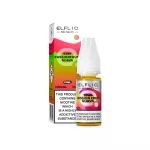Cannabidiol has revolutionised the way we think about the cannabis plant, and over the last few years has seen many new methods of application arise. From CBD vape oils now reaching similar levels of popularity as e-liquids with nicotine in the UK, and tinctures, topical creams and supplements hitting the mainstream, one of the most fun and versatile uses of this non-psychoactive terpene in CBD edibles.
CBD edibles in the UK are widely accepted as a fun and creative way to enjoy the benefits of cannabidiol. Edibles have paved the way for foodies of all skill levels to incorporate the now legal relaxation and wellness benefits of cannabidiol into ever more unique and tasty dishes. Whether that be through baked goods, sweets or even beverages, CBD is seeing an uptick in its use as an ingredient in and of itself. Below is everything you need to know about the use of CBD in foodstuffs, and how it affects the body.
Modes Of CBD As An Edible
CBD is popular as an e-liquid, but for edibles, there are a number of different forms that you can use to cook and mix into your foodstuffs. The concentration and amount you use is an important aspect when it comes to cooking with cannabidiol effectively, so it’s worth factoring in your desired effects and the ratio of cannabidiol to other ingredients before cooking.
CBD Oils

Cannabidiol oils are a mixture of CBD concentrate and oils and can come in either tincture or carrier oil form. The difference between tinctures and CBD oils is that tinctures are distilled concentrations within alcohol oils, whilst CBD oil is usually blended into a carrier such as coconut or a palm kernel oil.
In CBD tinctures, the alcohol is used to steep the plant material, whilst CBD oil uses a carrier oil to blend into an MCT oil, which is easier to digest in food as opposed to the tincture. They also have a more palatable taste than CBD tinctures, but tinctures are easier to absorb straight into the bloodstream via direct application into the mouth.
CBD Loose Leaf

Loose-leaf CBD can be boiled down into butter and cooking oil form, making it a great foundation for cooking baked goods and meals. Loose-leaf might take a little more preparation to mix into edibles but retains a lot of the natural flavour of its hemp source.
Benefits For Sleep Disorders

Products such as CBD gummies can be a sweet and tasty treat to start your day in a relaxed mode, but CBD edibles are also a perfect way to unwind in the evening. They are especially useful for those suffering from insomnia and other sleep disorders. Research suggests that CBD can help to ease sleep disorder side effects and symptoms within one month of its use.
Benefits For Pain Management

As with sleep disorders, CBD edibles such as CBD gummy bears can also be great symptom relievers of pain. Chronic illnesses such as arthritis and psoriasis ca have their more painful symptoms eased through cannabidiol’s interaction with anti-oxidants in the body, which can encourage swelling to ease and inflammation to calm.
Slow Absorption Rate
Remember that compared to other forms of CBD applications, eating cannabidiol can take a little longer. Digestion of food can take anywhere between 45 minutes and 2 hours and after that, the CBD has to then be broken down by the enzymes in the liver. Expect to feel the effects of CBD edibles up to six hours after you’ve ingested them, and schedule your use of it accordingly.





